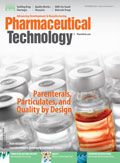New Era for Generic Drugs
Manufacturers face regulatory overhaul, while brand-generic debates escalate over biosimilars and labeling changes.
The 30th anniversary of the Hatch-Waxman Act in September generated widespread recognition of how the legislation created today’s vibrant generic-drug industry. Generic drugs now account for more than 85% of US prescription drug use, and the development of biosimilars promises to extend this trend to large molecules. Such transformation was unanticipated back in 1984 by the authors of the legislation, Sen. Orrin Hatch (R-Utah) and Rep. Henry Waxman (D-Calif), who is retiring from Congress but continues to urge vigilance to ensure that Americans retain access to low-cost quality medicines.
A September conference commemorating Hatch-Waxman sponsored by the Food & Drug Law Institute (FDLI) described the world with few generic drugs prior to 1984 and how the legislation was born of a compromise between brand-name firms seeking patent extensions and consumers demanding a clearer pathway for bringing low-cost drugs to market. Former FDA officials recalled the challenges in establishing new policies for testing and evaluating generic medicines and how the program’s success has generated thousands of abbreviated new drug applications (ANDAs) and supplements that are requiring major operational changes at FDA. Hatch-Waxman also has generated a host of legal, regulatory, and economic issues that complicate generic drug oversight and distribution.
User fees alter landscape
The Hatch-Waxman anniversary also coincides with the beginning of year three of the Generic Drug User Fee Act (GDUFA), the fee scheme approved by Congress in 2012 to speed up ANDA approvals. The program expands FDA review staff, supports timely field inspections, and funds research on developing more complex generic dosage forms. One result is the elevation of the relatively small Office of Generic Drugs (OGD) in the Center for Drug Evaluation and Research (CDER) into a “super office” to accommodate a larger cadre of scientists, reviewers, and policy experts to support new regulatory approaches.
GDUFA requires OGD to meet certain time frames for assessing and approving ANDAs and supplements, while also whittling away at a massive application backlog. Specific goals for reviewing ANDAs kick in this year, and manufacturers have concerns about OGD meeting the schedule. An unanticipated problem is that more than 1400 applications were filed this past year, many more than projected, making it even more necessary for OGD to implement a new review process that sets priorities based on product risk, medical importance, review goal dates, and internal workload factors.
Chemistry reviewers will provide “appropriate scrutiny” to high-risk areas, while streamlining the review of lower-risk products, explained Susan Rosencrance, then acting deputy director for generic drug chemistry in CDER’s Office of Pharmaceutical Science (OPS), at the FDA/PQRI conference in September 2014. The risk-based review approach has already paid off with a 50% reduction in chemistry review times this past year, she noted.
A main strategy for speeding up ANDA review and approval is to reduce the number of application review cycles. OGD is implementing a “real-time communication” program that allows staff to discuss minor deficiencies that can be resolved quickly with manufacturers. The agency also is adopting a “block review” approach that assigns a team to three or more ANDAs with the same reference listed drug or same drug master file. This system moves away from OGD’s random assignment approach, established to avoid any appearance of favoring one application over another. Block reviews aim to reduce repeated efforts, promote information sharing, and produce more consistent decisions.
CDER also is working hard to cut the massive backlog of some 5000 generic-drug manufacturing supplements. An efficient supplement review process is key to encouraging product modernization and quality improvements for marketed drugs, and Rosencrance’s office has almost halved the backlog through a “strategic plan of attack” by a special supplement review team of external and internal chemistry reviewers.
Not all is rosy with FDA’s GDUFA implementation process, though, as seen in concerns raised by manufacturers about still-slow ANDA approvals at a GDUFA public hearing in September. Small manufacturers asked FDA for reduced annual facility and filing fees, and several industry executives urged more clarity in how new guidance would be implemented. They offered specific comments on recent guidance documents on ANDA content and format and on the refuse-to-receive policy. The loudest complaints focused on OGD’s new communications policy ending informal phone conversations between FDA staffers and industry representatives. Manufacturers say such communication is key to resolving problems quickly and helps them plan for production changes and product launches. FDA officials maintain that constant queries are a burden, lead to inconsistent practices, and raise the specter of favoritism. But they now plan to review and revise the policy in response to industry concerns.
Liability and labels
Meanwhile, the continued growth in generic drug market share has generated more legal challenges to product development and marketing. Recent Supreme Court decisions have raised questions about the adequacy of safety information in generic-drug labels, prompting FDA to propose a new rule on labeling changes that generics manufacturers strongly oppose as likely to lead to different labels on brands and generics. The Generic Pharmaceutical Association (GPhA) says FDA’s policy raises liability issues that could curb development of new low-cost medicines and has sought Congressional support for its position. The legal battle is escalating as brand manufacturers seek to avoid added liability for patients harmed by generic drugs, and generic-drug companies insist they can’t have labels different from the brand. GPhA has proposed that FDA itself establish a fast, efficient process for updating labeling changes on both brand and generic drugs, and to transmit such updates electronically to prescribers, dispensers, and patients.
Generic-drug makers also are fighting innovators over allegations that brands use risk evaluation and mitigation strategies (REMS) to block the development and testing of new therapies. GPhA backs legislation to make it harder for innovator firms to claim that a restricted distribution program required by a REMS prevents it from making available drug samples needed for bioequivalence testing.
The emergence of biosimilars continues to fuel debate over the assessment of similarity between reference products and follow-ons. Although there is general agreement that in-depth analysis of product structure and function plus pharmacology testing can combine to document similarity, there’s much disagreement over extrapolation of data by a biosimilar sponsor to support approval of additional uses and over product “naming” to distinguish innovators from biosimilars, as brands look to discourage interchangeability and substitution of future biosimilars.
Successful biosimilar development must consider manufacturing costs and quality commitments, pointed out Parexel Vice-President Cecil Nick at the September biosimilars conference sponsored by the Drug Information Association. In addition to assessing non-clinical and clinical data requirements, sponsors must weigh the costs and efficiencies of in-house production versus contract manufacturing in terms of production yield, media costs, disposable versus fixed production train, needed purification steps, and fill/finish arrangements.
The generic-drug industry is “at a crossroads,” commented Mylan Senior Vice-President Carmen Shepard at the FDLI conference. GDUFA promises to provide more predictable regulatory actions and to encourage high quality production. But manufacturers fear that an over-emphasis on meeting review goals could actually delay final approvals and end up with first filers losing exclusivity, undermining incentives for developing new generic products.

About the Author
Jill Wechsler is Pharmaceutical Technology’s Washington editor, tel. 301.656.4634, jwechsler@advanstar.com. Read Jill’s blogs at PharmTech.com/wechsler.
